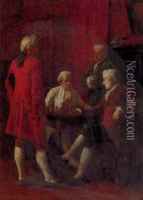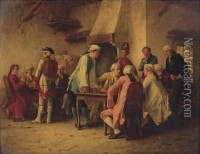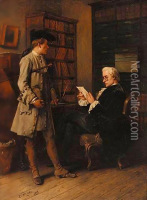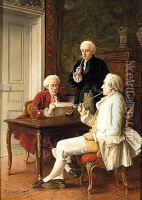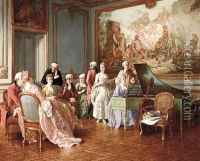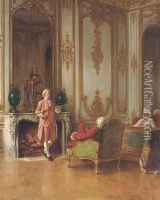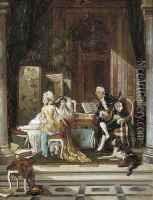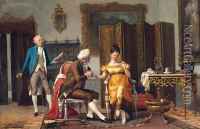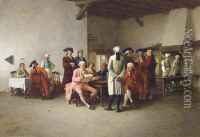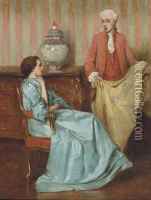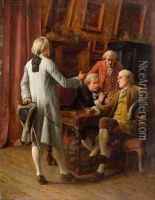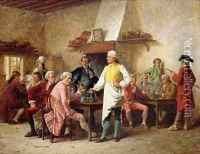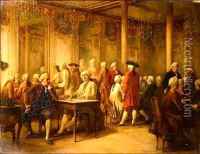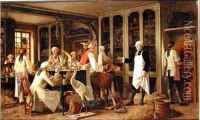Benjamin Eugene Fichel Paintings
Benjamin Eugène Fichel was a French painter born on August 30, 1826, in Paris. He demonstrated an early talent for the arts and was admitted to the École des Beaux-Arts in Paris, where he studied under esteemed academic painters like Paul Delaroche and Michel Martin Drolling. Fichel's training was rooted in the academic tradition of fine draftsmanship and adherence to the classical standards of beauty and composition.
Fichel's work spanned various genres, including genre scenes, portraits, and historical paintings. He was particularly noted for his genre scenes, which often depicted everyday life with a level of detail and realism that was highly appreciated in his time. His ability to capture the nuances of facial expression and social interaction made his paintings popular among the Parisian bourgeoisie, who were his main patrons.
In 1857, Fichel achieved significant recognition when he received a medal at the Paris Salon, an official art exhibition of the Académie des Beaux-Arts in Paris. The Salon was the most important art event in the 19th century, and receiving a medal was a distinction that could launch an artist's career. Fichel continued to exhibit at the Salon and other venues, gaining a reputation for his meticulous technique and his keen observation of contemporary life.
Throughout his career, Fichel remained committed to the academic style and did not veer into the emerging Impressionist movement that was gaining momentum during his lifetime. His paintings reflected the tastes and values of the time, with a focus on storytelling and moral lessons conveyed through visual means.
Benjamin Eugène Fichel died on February 5, 1895, in Paris. Although not as widely known today, during his lifetime he was a respected member of the Parisian art community. His works can still be found in museums and private collections, offering a glimpse into the social fabric of 19th-century France through the lens of a skilled academic painter.
